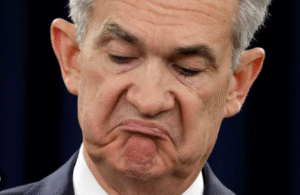$SPY $VTI $BTC
#markets #stocks #crypto #economy #inflation #retail #consumerspending #investing #finance #trading #wallstreet #growth
The resilience of the U.S. consumer continues to play a pivotal role in supporting economic growth, as evidenced by February’s retail sales data. While the latest figures came in lower than economists had anticipated, they still showed an increase from the prior month, signaling ongoing consumer activity. Retail spending has been a crucial driver of the economy, contributing significantly to GDP. Given that consumer spending accounts for nearly 70% of U.S. economic output, any indication of continued purchasing behavior can provide confidence to investors. Despite concerns over inflationary pressures and interest rate policies, the moderate rise in retail sales suggests that many consumers remain willing to spend, albeit at a potentially slower pace.
Markets responded positively to the data, reflecting investor sentiment that a steady, if not robust, consumer could prevent a sharper economic slowdown. The S&P 500 and other major indices posted gains for the second consecutive session, with cyclical sectors such as retail and consumer discretionary seeing particular strength. Investors have been paying close attention to consumer trends as a gauge for broader economic health. While persistent inflationary concerns remain, the fact that spending is holding up suggests that the Federal Reserve’s tightening policies have not yet significantly curtailed consumer behavior. This dynamic keeps expectations fluid regarding potential rate cuts or continued restrictive policy decisions.
However, a more cautious perspective is warranted. Some analysts argue that high levels of credit card debt and shrinking household savings could pressure future spending. Consumer confidence, although stable, remains sensitive to macroeconomic trends, particularly in response to interest rates and inflation outlooks. If inflation remains elevated, the Federal Reserve may delay any potential rate cuts, maintaining higher borrowing costs for longer. This could weigh on consumer sentiment and future retail figures. Companies within the consumer sector will need to navigate these challenges carefully, assessing how discretionary income trends impact earnings forecasts in the coming quarters.
For investors, the mixed signals in the retail space highlight the importance of diversification and strategic positioning. While the stock market has climbed for a second consecutive session on consumer resilience, upcoming economic data releases—such as inflation reports and employment figures—will help shape broader market movements. Additionally, some investors are increasingly looking at alternative assets like cryptocurrencies in response to macroeconomic uncertainties. Bitcoin, for example, has seen strong gains in 2024, driven by both institutional adoption and its narrative as a hedge against inflation. As markets digest incoming data, maintaining a balanced approach between equities, fixed income, and alternative assets could be key in managing potential volatility ahead.











Comments are closed.